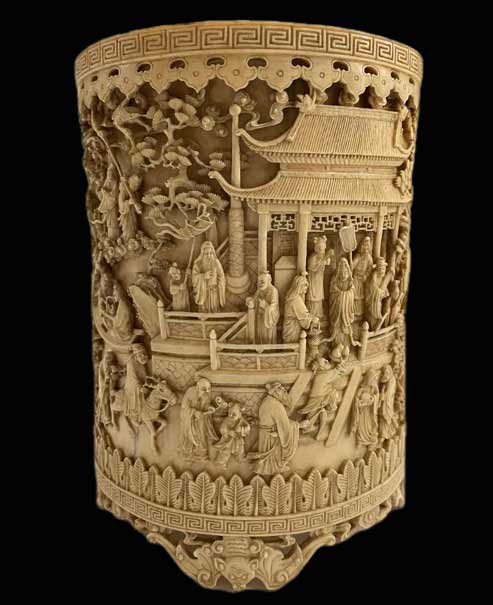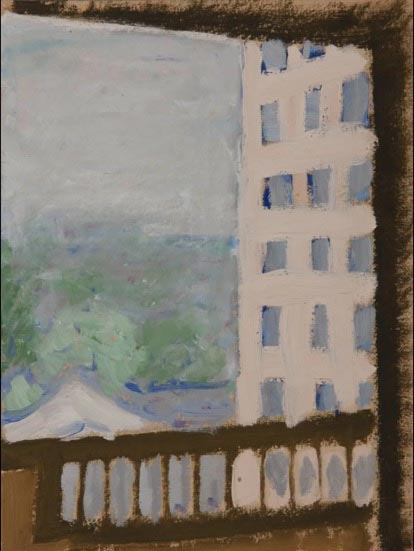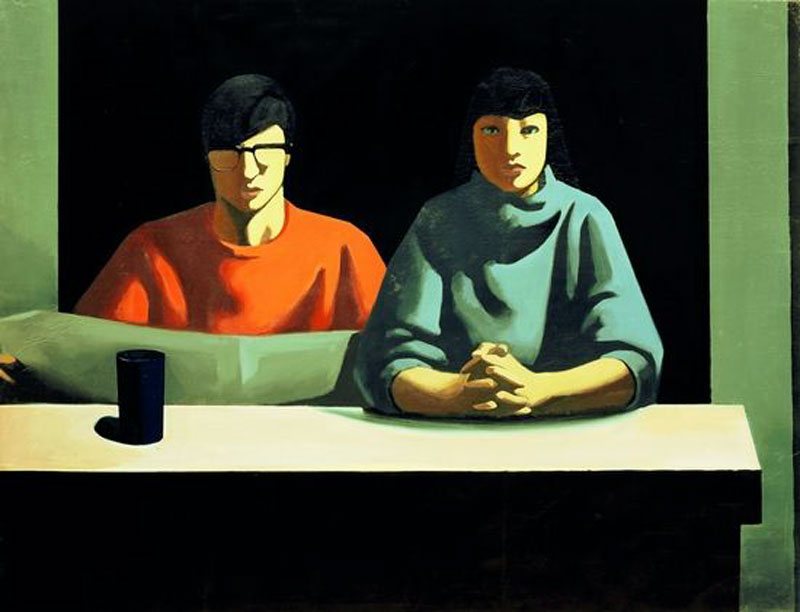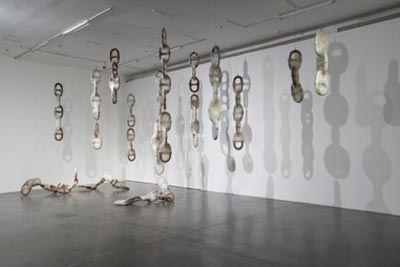H.5 Current Research in Chinese Art in Canada
Sat Oct 21 / 15:30 – 17:15 / KC 205
chair /
- Julia Orell, University of British Columbia
This session seeks to bring together scholars and graduate students working on a variety of topics and subfields in Chinese art at Canadian institutions, ranging from pre-modern to contemporary art. The aim of this session is to build connections beyond individual networks that are mostly outside of Canada, to share current research, provide mentoring for graduate students, and to make this field more visible UAAC.
keywords: Chinese art
session type: panel
Julia Orell is assistant professor for Chinese art history at the University of British Columbia. She received her PhD from the University of Chicago, has taught at the University of Zurich, and held postdoctoral fellowships at the Getty Research Institute (Los Angeles) and Academia Sinica (Taipei), and was recently a member of the Institute for Advanced Study in Princeton.
Orell’s primary area of research in Chinese landscape painting of the Song and Yuan dynasties focuses on the depiction and construction of place in painting and other visual media, interrogating the role of painting in the production of knowledge and its entanglement with historical geography and cartography. Her second area of research addresses the formation of East Asian art history as an academic discipline in the German-speaking parts of Europe in the late nineteenth and early twentieth centuries.
First-Person Vision in Middle-Period Murals and Landscape Paintings
- Yi-bang Li, McGill University
In many Chinese paintings from the first to eleventh centuries, there is a contrast in size between figures depicted on the same horizontal level. The most well-recognized pictorial contrast of this kind is found in several traditional figure paintings and engravings, where the more significant or honorable protagonists are depicted larger than the minor figures by their side to highlight their differing social status. Besides visualizing a social hierarchy, this kind of contrast between the sizes of depicted figures was also used as a perspectival approach that visualizes the distance between spatial layers, whose implications and significance are often overlooked by modern viewers. Underlying this perspectival approach is the tendency to organize pictorial space from a first-person perspective, conveying the vision of a specific subject by shrinking the sizes of pictorial motifs according to their varied distance from him/her. This subject could be the protagonist depicted in the painting, the painter himself, or the intended viewer outside the pictorial space. In this article, I will examine scroll paintings and murals from the fifth to the eleventh centuries to illustrate the visual effects that this perspectival approach creates and reconstruct its evolution in Chinese painting history. Situating these pictorial representations in the cultural and ritual contexts in which they were created and the spatial contexts in which they were viewed, this article explores how this perspectival approach produced a specific visual experience from the intended viewer’s point of view and why it was adopted by the painters or designers.
keywords: Chinese scroll painting, Chinese mural, size, first-person vision, spatial representation
Yi-bang Li is a doctoral candidate in the Art History & Communications Studies Department at McGill University. Before enrolling at McGill University, he earned a Master's from IFA, New York University, and a bachelor's from Sichuan Institute of Fine Arts. His dissertation focuses on the spatiality of Chinese murals from the mid-eighth century to the twelfth century. Awarded the Graduate Excellence Award of McGill University, the Max Stern McCord Museum Scholarship, and the Chiang Ching-kuo Foundation Doctoral Research Fellowship, he published a paper in 2021 titled “The Cross-media Transmission and Transformation of an Image: Revisiting The Western Mountain God Descending from Heaven” in the Journal of the National Museum of China 國家博物館館刊.

Anonymous, Medicinal Herb Picker, Liao dynasty, before the mid-eleventh century, from a deposit in a wooden Buddha statue, Yingxian pagoda, Shanxi province, banner painting now mounted as a hanging scroll, ink and color on hemp paper, 54 x 34.6 cm
Gender, Immortality, and the Body in Medicinal Herb Picker at Yingxian Wooden Pagoda
- Davin Luce, McGill University
In 1973 a painting titled Medicinal Herb Picker (Caiyao tu 採藥圖) was excavated from an eleventh-century Shakyamuni Buddha sculpture at the Liao dynasty (916-1125) Yingxian Pagoda at Fogong Temple in present-day Shanxi province. This painting, which has garnered relatively little attention in English-language scholarship, is variously described as depicting the male Daoist immortal, Shennong 神農, or female Daoist immortals such as Maonü 毛女 or Shangui 山鬼. However, its location inside the Buddha sculpture prompts further consideration.
My paper looks beyond the strict confines of any one religious tradition by considering the social context of the painting’s production. I place a particular focus on the representation of the figure’s clothing and body to explore how and why the painter utilized motifs commonly associated with socially marginal figures, such as commoner women, ghosts, and beggars. In doing so, I suggest that the painter crafted an image of a female immortal or deity that is distinct from the idealized form, which typically shares conventions with representations of palace ladies.
Through my analysis, I demonstrate that the Yingxian painting is a site of negotiation that attempts to balance social codes across gender, social, and religious categories. In conveying this balance, the figure can be read as one who exists in a realm away from society while simultaneously remaining fundamentally linked to the social world in which the work was painted.
keywords: Chinese art, the body, clothing, social status
Davin Luce is a second-year PhD student in the Department of Art History and Communication Studies at McGill University working under the supervision of Dr. Jeehee Hong. Davin’s research focuses on representations of the Other, or marginalized groups, in middle period China (10-14th centuries).
Davin holds a BA (hons) from McGill University, and a MA from the University of British Columbia where he worked under the supervision of Dr. Julia Orell. Davin’s MA thesis (2022) is titled “Li Tang’s 李唐Moxibustion: The Spectacle of Pain, the Supernatural, and the Supramundane.” At UBC, Davin was a Managing Editor of the graduate journal in art history, Wreck, and a Co-Chair of the Department of Art History, Visual Art, and Theory’s graduate symposium, Radical (Re)worlding.
Davin’s MA studies were supported by the SSHRC CGS-M and the Jane Irwin Graduate Scholarship, and his PhD studies are supported by the Max Stern Museum Fellowship.

Carved ivory, MacKenzie Collection
Chinese Art Collection in the Western Canadian Art Museums – Chinese Ivory Carvings from the Norman MacKenzie Collection
- Sisi Li, University of Regina
Western Canadian Art Museums (WCAMs) have been collecting Chinese artworks since at least the early twentieth century. As part of the ongoing presence of East Asian art in WCAMs, these Chinese collections should serve as examples of important national heritage cultures, helping us to interpret the complexities of empire, the colonial and postcolonial periods, and the interaction of politics, history, art market diplomacy, and human rights between Canada, China, and Japan. Regrettably, the value of these collections is too often buried, misinterpreted, and ignored in the scattered texts and orphaned objects that make up the archives and collections.
Norman MacKenzie is one of the most important collectors of Asian art in Prairie history. He collected many Asian artworks, including some exquisite Chinese ivory carvings, during the global colonial movement in the early twentieth century. The original collecting purpose of these Chinese ivory carvings was influenced by European aesthetics, imperialism, and nationalism. However, with the advancement of multiculturalism and government/museum policies, the interpretation and attitude of art institutions and communities towards these ivory sculptures have changed fundamentally. These ivory carvings are now regarded as an essential Canadian minority cultural heritage for preservation. This paper will explore how these Chinese collections participated in the Prairie art history and the historical and contemporary significance of Chinese culture and art to the development of Prairie culture.
keywords: cross-cultural collecting, Chinese art, Western Canadian art museums, Norman MacKenzie, Chinese ivory carvings
Sisi Li is currently studying for an interdisciplinary doctoral degree at the University of Regina. The focus of her research and publications is East Asian collections in Western Canadian Museums. She participated in the writing of the Language section of the book Print Pals: Then and Now (2021), which emerged as an outcome of the Paul Mellon Centre’s London, Asia research project. She co-hosted a panel of the UAAC-AAUC Conference in 2021 on “Asian Collections in Canadian Museums and Galleries from the Nineteenth Century to Today.” She was a speaker at the Collections as a Mirror of Social Values Conference, organized by the Art History Department of the University of Munich in 2022 and will present on and chair the panel What is Prairie Art History?, an event sponsored by Prairie Art Network, Faculty of Fine Arts of University of Lethbridge, Gail and Stephen A. Jarislowsky Institute, and other Prairie art institutions in June 2023.

Zhang Wei 張偉 (b. 1952), Fusuijing Apartments 福綏境公寓, 1975, oil on canvas, dimensions unknown, M+
City Windows
- Lisa Claypool, University of Alberta
A palace courtyard, an apartment building, a hospital, a tea house. Are paintings of such urban places windows on the city? We might arrive at an answer to this question by first asking more simply, what is a window? This paper explores oil paintings by four Chinese artists who encountered the capital city of Beijing through window frames from the late 1970s to the early 1990s. It conceptualizes their project by way of Qian Zhongshu’s 錢鐘書 elegantly written essay “Windows” 窗 (1948) in the anthology Arriving at the Margins of Life 寫在人生邊上.
keywords: city, window, Chinese oil painting, vision
Lisa Claypool is Associate Professor in the History of Art, Design, and Visual Culture program and Director of the Curatorial Design Research Lab at the University of Alberta. She is the author of a book in progress, Boundary-Forms: Design and Science in Modern China. Her research focuses on the relationship of perception and representation at the interstices of art, design, and the natural sciences in modern and contemporary China. She has published in the journals positions: east asia cultures critique, The Oxford Art Journal, and The Journal of Asian Studies, among others. Her popular blog “Staring at the Ceiling” is a meditation on encounters with visual arts in China and the pan-China diaspora now. Claypool’s work has been supported by the Social Science and Humanities Research Council of Canada, a Mellon Senior Fellowship at the Center for Advanced Studies in the Visual Arts, and the Chiang Ching-kuo Foundation.

Geng Jianyi, Two People under a Light, 1985, oil on canvas, private collection
Zheng Shengtian and the Zhejiang Academy of Fine Arts in 1985
- Jacob Zhicheng Zhang, University of Toronto
When Zheng Shengtian (born 1938) embarked on his two-year sojourn in the United States and Western Europe, he was tasked to return in 1983 with his learnings to the Zhejiang Academy of Fine Arts (ZAFA), where he taught as a professor. In this paper that foregrounds this experience abroad, I analyze three events—all from 1985, the namesake year of the “85 Art New Wave” episode of contemporary Chinese art—in which Zheng was involved to different extents as an organizer, supervisor, or critic. The May oil painting workshop led by the Paris-based ZAFA alumnus Zao Wou-Ki (1921–2013), the July graduate exhibition at ZAFA, and the November Rauschenberg Overseas Culture Interchange: ROCI China exhibition at the National Art Museum constitute the events I investigate. In contrast to contextualizing these events differentially as their involved figures might suggest, I intend to bring their continuity into focus, drawing on Zheng, his notion of postmodernism, and his interlocutors in and outside the academy as a grouping mechanism. I argue that Zheng espouses a particular vision of postmodernism and embraces it in the socialist context. In rebranding postmodernism as pluralist and identifying Chinese artworks created in its proximity as “sincere” and “[serving] socialism and the people,” Zheng and his colleagues counter the reported uniformity of socialist art, not to break away from the academy but to expand its future legacy.
keywords: postmodernism, ’85 Art New Wave, late socialist art, art education, Robert Rauschenberg
Jacob Zhicheng Zhang is a PhD student at the Department of Art History at the University of Toronto. He received his BA in Art and Chemistry from Colby College and MA in Modern and Contemporary Art History from the School of the Art Institute of Chicago, where he studied as a New Artist Society Scholar. Before commencing his graduate studies, he received training in art conservation and interned at the Philadelphia Museum of Art and the National Gallery of Art. Between 2019 and 2022, he was a Berlin-based contributor to art periodicals. His research interests lie in the transnational art and visual cultures of Sinophone regions and Asian North America, especially those manifested through lens-based media and reflective of art education. He has published in Synoptique: Journal of Moving Image Studies and catalogues accompanying exhibitions, such as Material Meanings: Selections from the Constance R. Caplan Collection at the Art Institute of Chicago.

Liang Shaoji, Chains: The Unbearable Lightness of Being/Nature Series No.79, 2003 Raw white silk, silk cocoons, resin, iron powder, dimension variable, ShanghART Gallery
Liang Shaoji: Silkwork Entanglement
- Xiaofan Wu, Carleton University
For over 30 years, Chinese artist Liang Shaoji (b. 1945, Shanghai) has been engaged with silkworms in his multi-disciplinary practices informed by Daoist cosmologies. In the mid-80s, he studied soft sculpture with fiber artist Maryn Varbanov (1932-1989) at the Zhejiang Academy of Fine Arts (now China Academy of Art), where he incorporated raw silk and cocoons in his artworks for the first time. In 1989, Liang began to rear silkworms in his studio, and he has since established an intimate relationship with the species through care and invited silkworms to participate in his art-making processes. The spun silk strands, for Liang, are an embodiment of time and the environment, whereas the cocoon signifies a universe that embodies metamorphosis/ change. Liang’s works are therefore beyond static installations but are time-based. In his suspended sculpture series Chains: The Unbearable Lightness of Being (2002-7), Liang put mature silkworms on gigantic iron chains to spin until the soft raw silk fully wraps the hard metal. In the sound installation, Listen to the Silkworms (2006-2021), Liang places racks of bamboo baskets with living silkworms and mulberry leaves in the gallery space. Their sound of consuming and spinning is recorded on-site and played simultaneously in the headphones nearby, creating a space for meditation. This paper suggests that Liang’s artworks are a cross-species co-creation that reflects planetary aesthetics addressing the relationship and the entangled history of human and silkworms. As actants in Liang’s works, silkworms mediate the human condition and natural elements in a more-than-human world.
keywords: contemporary Chinese art, silkworm, Liang Shaoji, anthropocene
Xiaofan Wu is a Ph.D. student in Cultural Mediations at Carleton University, Ottawa, Canada. Her research focuses on contemporary Chinese art, with a special interest in ecological art, performance, new media, and exhibition history. She graduated in 2018 with a B.A. with distinction in the History of Art from the University of Illinois at Urbana-Champaign, where she completed her honor thesis, After Shock: Performance Art in China after 1989. In 2020, she received her M.A. in Art History from the Institute of Fine Arts, New York University, where she finished her master’s thesis At the Crossroads: Video Art in ‘Post-Sense Sensibility: Alien Bodies and Delusion’. She is also a member of the research trio Grey Matter, whose proposal Undercurrent: Rewriting conceptual practices of women artists in China back into contemporary art history received the 2022/23 Sigg Fellowship for Chinese Art Research.


